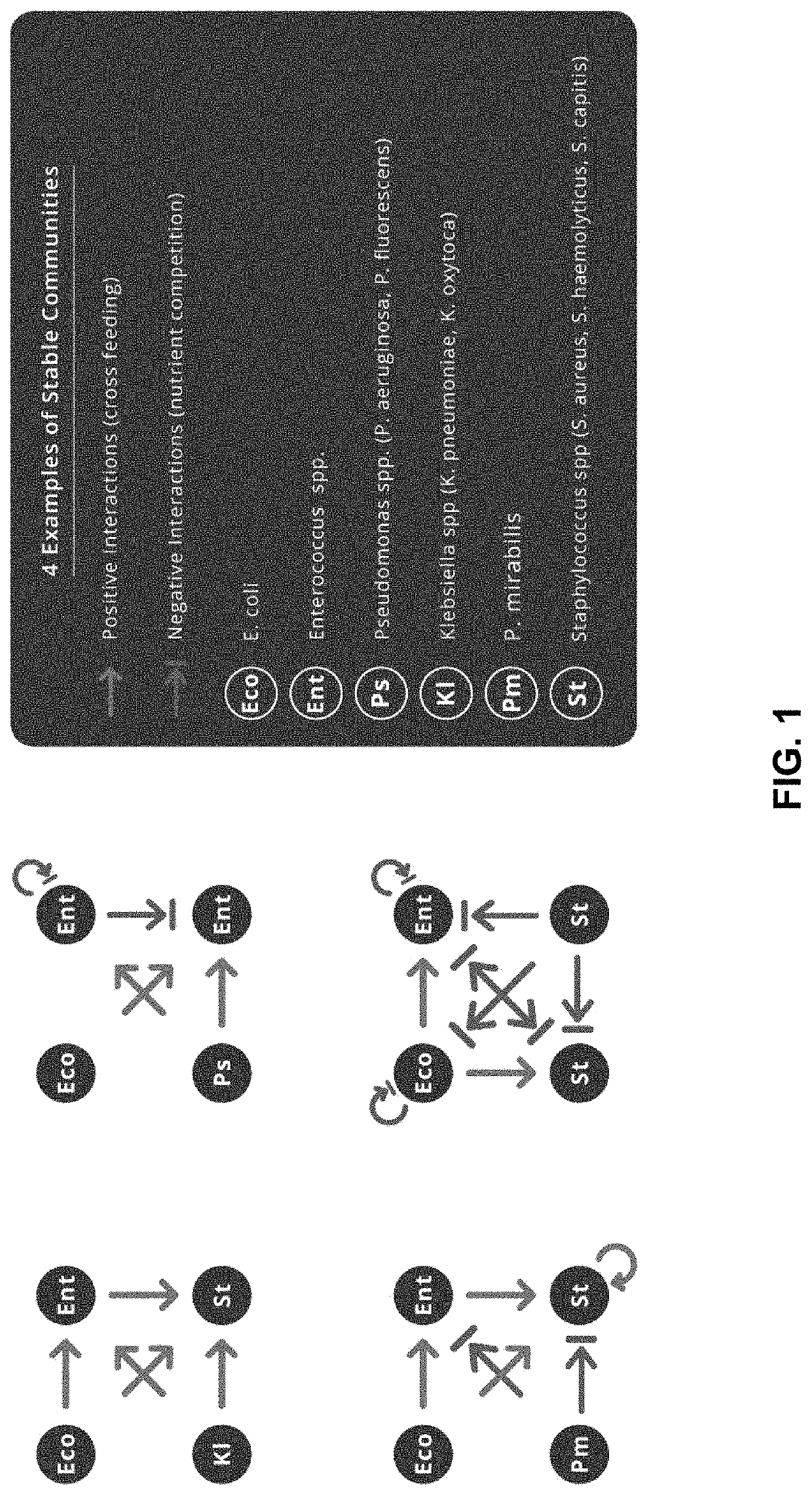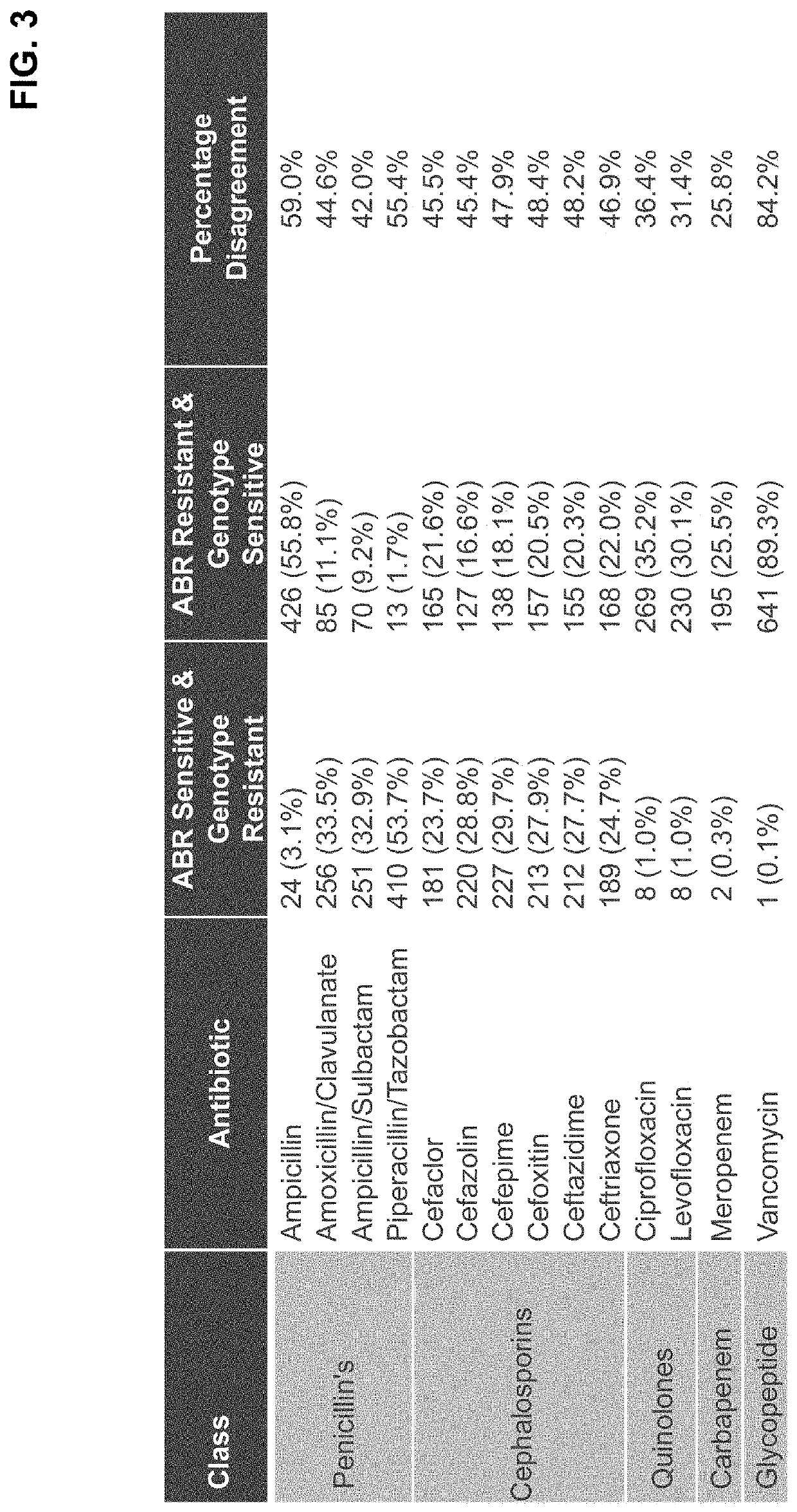Methods and systems for preparing therapeutic solutions for polymicrobial infections
a technology for polymicrobial infections and therapeutic solutions, applied in the field of methods and systems for identifying and treating polymicrobial infections, can solve the problems of significant morbidity, mortality, economic impact, etc., and achieve the effect of improving bactericidal activity
- Summary
- Abstract
- Description
- Claims
- Application Information
AI Technical Summary
Benefits of technology
Problems solved by technology
Method used
Image
Examples
example 1
Prospective Comparison of Multiplex Polymerase Chain Reaction Testing with Urine Culture for Diagnosis of Urinary Tract Infections in Symptomatic Patients
[0102]Urine culture is traditionally used for detection and identification of pathogens for diagnosis and management of urinary tract infections (UTIs). However, a growing body of evidence suggests that polymerase chain reaction (PCR) testing may be superior for both detection and identification of pathogens. This prospective multicenter study compared PCR with traditional urine culture for detection and identification of bacteria in 2511 patients (mean age 73; range 24-100) presenting with symptoms of UTI. Both urine cultures and PCR were performed on samples from all patients. PCR detected bacteria in 62.7% (1575 / 2511) of cases, while urine culture detected bacteria in 43.7% (1098 / 2511) of cases. PCR and culture agreed in 74.6% of cases: both were positive in 40.5% (1018 / 2511) and both were negative in 34.1% (856 / 2511). PCR and c...
example 2
Consortia Contribute to Pathogenesis of Polymicrobial Urinary Tract Infections
[0128]Urine is not sterile and has a unique microbiome, referred to as the urobiome. The view that urine is sterile arises from limitations of Standard Urine Culture (SUC), developed to detect common pathogens, such as uropathogenic Escherichia coli. However, SUC-independent methods, such as polymerase chain reaction (PCR), have demonstrate that culture fails to detect the majority of bacteria in urine, even in healthy individuals. Furthermore, expanded quantitative urine culture methods, which enhance the growth conditions for cultivating bacteria, show that the organisms uniquely detected by molecular methods are viable. The capability to detect and identify organisms in the urobiome in both health and disease has allowed a more detailed evaluation of dysbiosis as a potential mechanism for the cause of urinary tract infections (UTI).
[0129]Dysbiosis can take three forms, all of which involve a shift in th...
example 3
Interactions as Detected by Pooled Antibiotic Susceptibility Testing (P-AST) in Polymicrobial Urine Specimens
[0164]The standard of care for diagnosis of urinary tract infections (UTIs) is a standard urine culture (SUC) along with antimicrobial susceptibility testing, and has served to guide treatment since the early 1950s. The methodology relies on an “Escherichia coli (E. coli)-centric” view that perceives UTIs as caused by one or two pathogens. Recent findings, however, reveal that SUC often misses the vast majority of uropathogens and that up to 39% of these infections are polymicrobial in nature. In parallel, antibiotic resistance has been well-studied in monomicrobial infections, but is less characterized in polymicrobial infections. Yet, interactions between bacteria can alter responses to antibiotics.
[0165]Currently, antibiotic susceptibility testing (AST) ignores bacterial interactions. In AST, each bacterium is tested in isolation against an antibiotic, providing no opportu...
PUM
| Property | Measurement | Unit |
|---|---|---|
| Volume | aaaaa | aaaaa |
| Volume | aaaaa | aaaaa |
| Volume | aaaaa | aaaaa |
Abstract
Description
Claims
Application Information
 Login to View More
Login to View More - R&D
- Intellectual Property
- Life Sciences
- Materials
- Tech Scout
- Unparalleled Data Quality
- Higher Quality Content
- 60% Fewer Hallucinations
Browse by: Latest US Patents, China's latest patents, Technical Efficacy Thesaurus, Application Domain, Technology Topic, Popular Technical Reports.
© 2025 PatSnap. All rights reserved.Legal|Privacy policy|Modern Slavery Act Transparency Statement|Sitemap|About US| Contact US: help@patsnap.com



